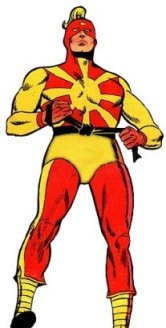Monday, December 22, 2014
Hanging The Green #11 - Dopes!
The eighty-sixth issue of Green Lantern and Green Arrow is the second of two issues which deal with the very real problem of drugs among the youth of America. The issue by the now-regular team of Denny O'Neil, Neal Adams and Dick Giordano is gorgeous to look at
.
When Green Arrow discovers his ward Speedy is a junkie, his reaction is anger, as he realizes a lot of it misplaced, but a fury which is rained down on Speedy himself. Disgusted he abandons his ward.
Meanwhile the junkies who first accosted Green Arrow in the first part of the story are enjoying their reward to having turned over the heroes to the dealers and one of the them overdoses on the exceedingly pure drug.
Green Lantern discovers the body of the dead junkie and finds Speedy in throes of his addiciton. Speedy is taken to the apartment of Dinah Drake who takes the boy in while he tries to go cold turkey. Green Arrow meanwhile is hunting the dealers, despite his injured arm, and is soon enough captured and sent to the bottom of the ocean with an anchor for company on the orders of the top boss a successful socialite businessman named Salomon Hooper. Green Lantern saves GL and while Speedy painfully recovers tended to by Canary, the duo locate the drug lab and bring down the operation.
At the funeral of Speedy's junkie comrade he confronts his mentor Oliver Queen and lets him know that drugs are a complicated response to a painful world and that Ollie needs to own his contributions to the problem. Walking away defiantly Speedy rebuffs his mentor, and Green Arrow sheds of regret for his role, and pride for the way his ward has grown up.
This one was a dang pretty good story. The battle against drugs is ongoing and sometimes gets swamped by the moralism which attempts to treat the issue more as sin than disease. In a society which is as medicated as our own, its difficult to understand why people don't understand how the young learn quickly enough that substances are a way to deal with pain and suffering. They see it all around them all the time.
I'm not sure I agree with all the speeches in these Green Lantern issues but certainly the attitude that drugs are a taboo subject does no one any good.
More to come.
Rip Off
Subscribe to:
Post Comments (Atom)





Nice review, Rip! Important issue in the history of comics. Love that cover, with the faces done in pencil/charcoal behind the dramatic scene. Excellent interior art also, realistic without overdoing it on the details.
ReplyDeleteI caught an old episode of Marcus Welby recently which dealt with the issue of drugs and young people around this time. If TV could show this type of topic, why not comics? I think these kind of stories can be thoughtful and well done.
This one and the issue before carried the Code approvals unlike the Spider-Man comics which came out several months before. The changes at the Code apparently came swiftly, when they came. Times, they were indeed a changin'!
DeleteRip Off
This was the first GL/GA I owned. I was only seven or eight when it was published. This was my first experience with comics and topical issues. I've gone back and re-read the earlier GL/GA's and this one has held up very well. Some of the earlier issues were a bit heavy-handed at times, but this arc was spot-on and still holds up well. Nicely done. I really think O'Neil/Adams were beginning to hit their stride with these issues. It was a shame that it ended soon after.
ReplyDeleteAllowing the drama to grow out of the characters makes the story feel more genuine. The tension between Green Arrow and Speedy feels really authentic.
DeleteRip Off
Interesting! Wikipedia has an entry on this two-parter, and has this to say about the ending:
ReplyDeleteO'Neil's original ending to the story had Speedy overcoming his drug habit on his own and reconciling with Green Arrow. Adams protested that this ending was too anticlimactic. When O'Neil said he disagreed, Adams scripted two new pages on his own and showed them to Schwartz. Schwartz approved of Adams's revision and had it published instead of O'Neil's ending. In a 1975 article for The Amazing World of DC Comics, O'Neil stated that he still felt Adams's conclusion was not as good as the original ending: "I disapprove of the implied conclusion of that story. What’s implied is that a punch in the mouth solves everything."
There are a lot of stories out there about how Adams would deviate from the scripts. Given our modern world of the auteur creator it seems natural enough, but I'm sure not so commonplace in a comic book world with specific job descriptions, that is until Marvel began to change the landscape.
DeleteRip Off